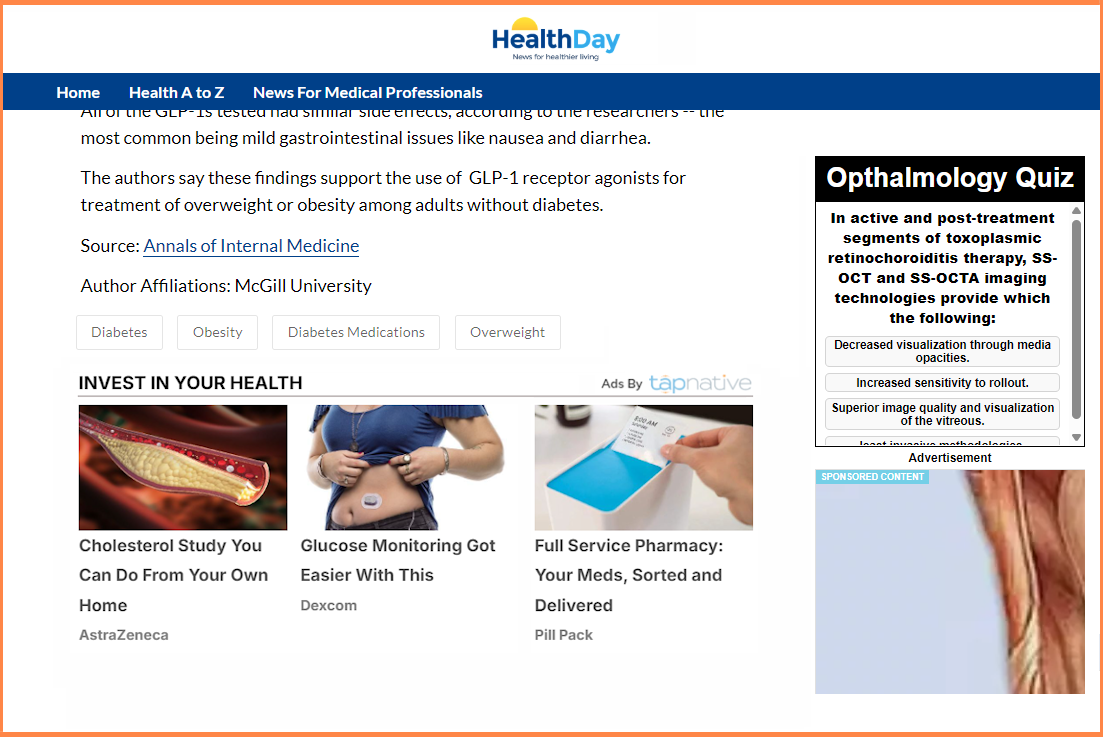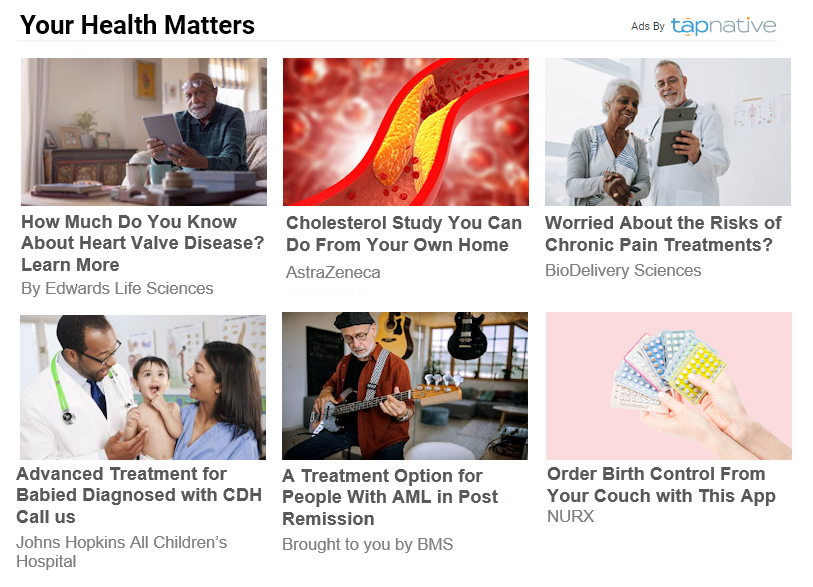Tapping into high-Intent Audiences with Contextual Native Advertising in GLP-1, Weight Loss and Diabetes Content
Contextual healthcare marketing is highly effective and free of data and privacy issues. Content style ads with in-content placement garner leading engagement. Put these 2 market forces together to unlock a powerful tool for marketers. As an alternative to standard programmatic display ads, performance-focused native advertising has emerged as a more effective strategy for many brands targeting consumers actively seeking solutions for their health concerns. Several market forced have converged and created a real demand for consumers to seek weight loss solutions. Besides summer being right around the corner, GLP-1 Medications & Breakthroughs, Post-Pandemic Health Prioritization and social media pushing body image conversations, many consumers are driven to improve their appearance alongside their health.
By strategically placing native ads within content related to GLP-1 medications, weight loss strategies, cardiovascular health, and diabetes management, marketers can engage users at the moment their intent is high, resulting in stronger performance outcomes.
Native advertising thrives in environments where user intent aligns with the content they are consuming. Tap Native ads are integrated into the content of hundreds of health, medical and wellness websites. Health-focused websites are prime real estate for this strategy, as visitors are often researching symptoms, treatments, and wellness strategies. When a consumer is exploring articles on GLP-1 medications, for example, they are likely considering treatment options for obesity or diabetes management. Similarly, content about cardiovascular health attracts readers who are actively seeking ways to improve heart health, fitness, or diet.
By targeting ads contextually within these environments, marketers ensure that their messages reach users in a mindset conducive to action. This performance-driven approach allows brands to tap into motivated audiences who are already engaged in their health journey. For example, an ad promoting a clinically supported weight loss solution placed within an article about GLP-1 treatment has a far greater chance of resonating with readers who are actively exploring treatment paths.
Performance-focused native advertising excels in this space due to its seamless integration with relevant content. Unlike disruptive pop-ups or banners, native ads naturally blend into the editorial experience, fostering trust and increasing engagement rates. Even users with bad cases of banner blindness are engaged in a highly useful way. Tap Native ads are like a shelf with multiple offers focused on health. The in-content placement, context and multiple offers create consideration unlike typical display ads. Here’s an example Tap Native ad unit feature directly below an article about diabetes on the HealthDay website.

To maximize ROI, marketers should prioritize premium health publishers that attract proactive audiences. Platforms like Tap Native, which specialize in health-related native advertising, excel at aligning ads with highly specific content categories such as GLP-1, weight loss, cardiovascular health, and diabetes. This targeted strategy ensures advertisers connect with motivated consumers when they are most receptive, driving meaningful conversions and improved campaign performance.

